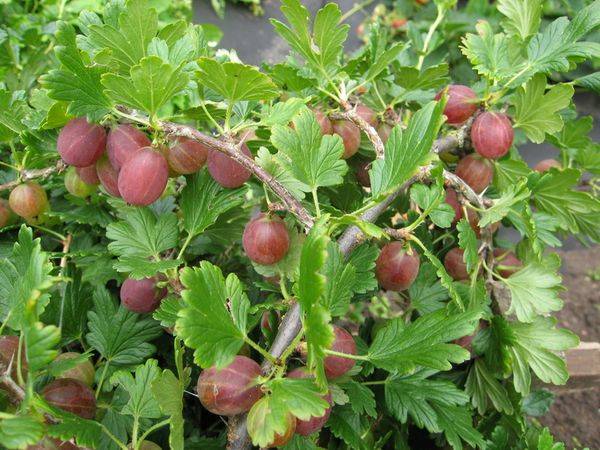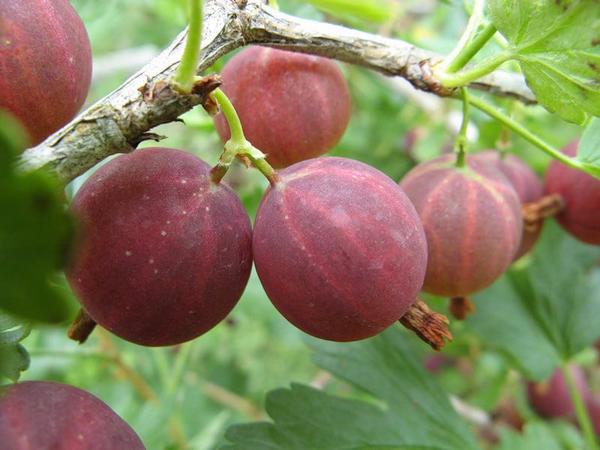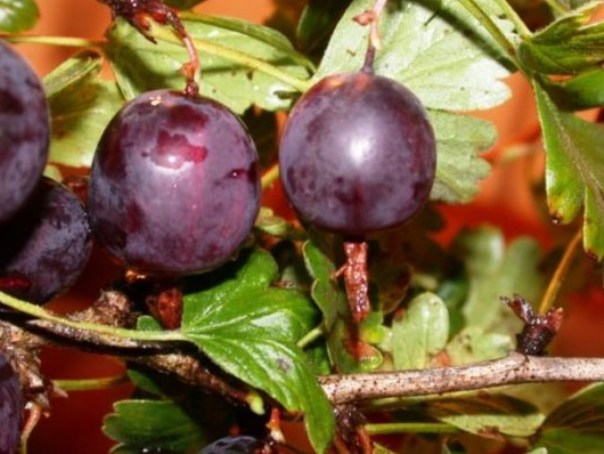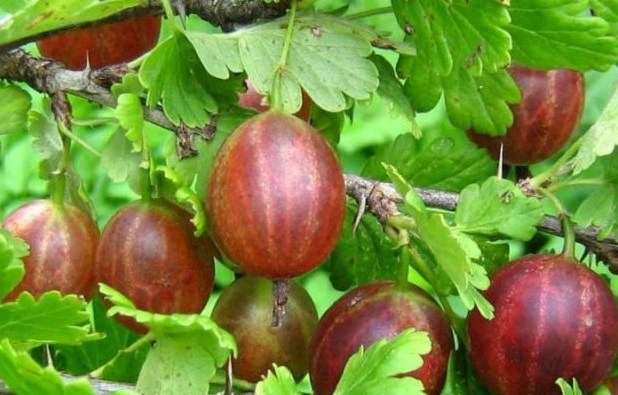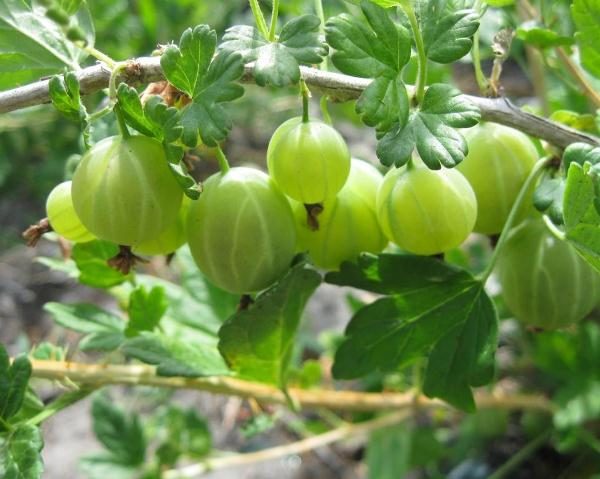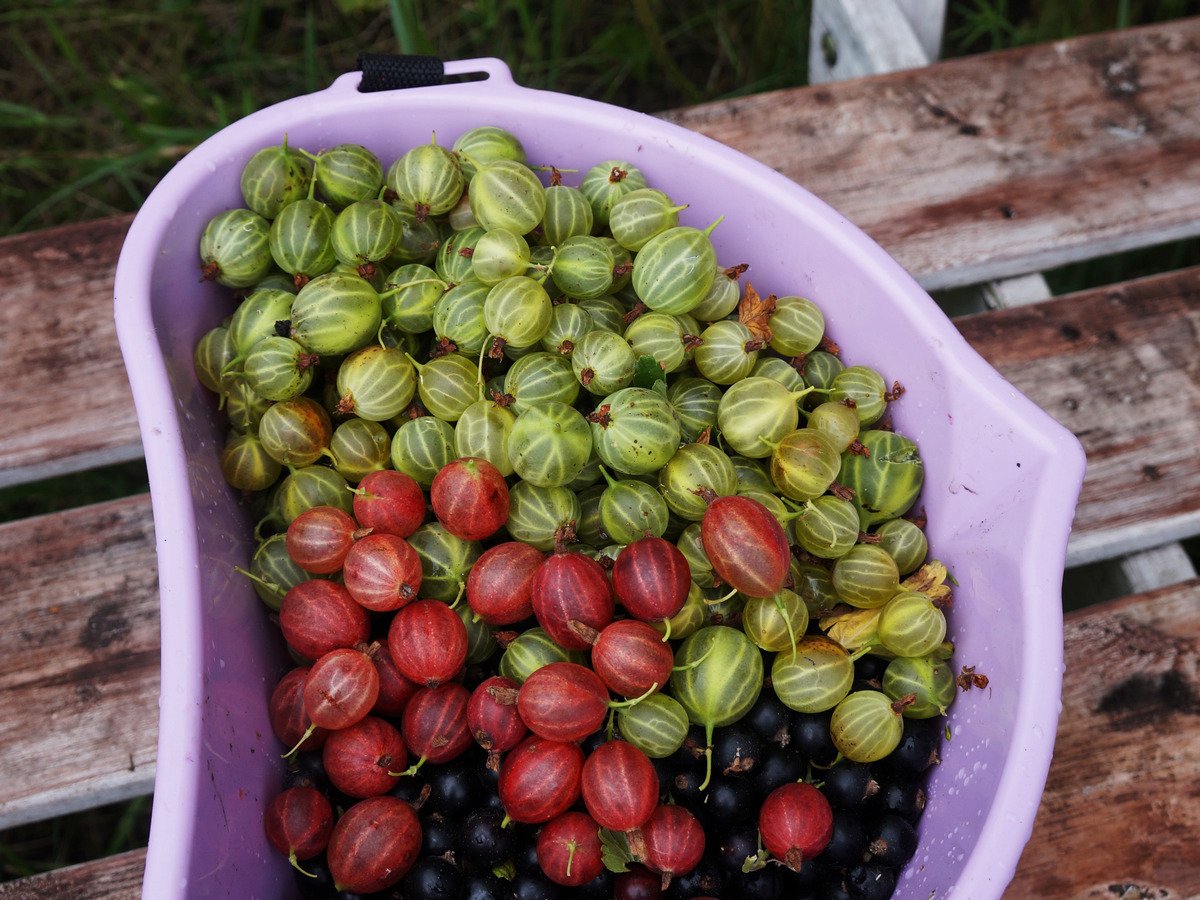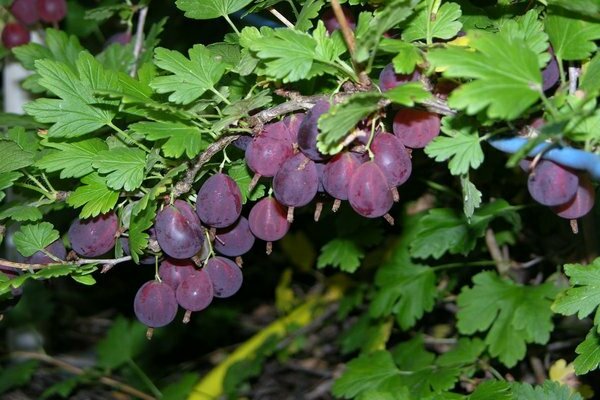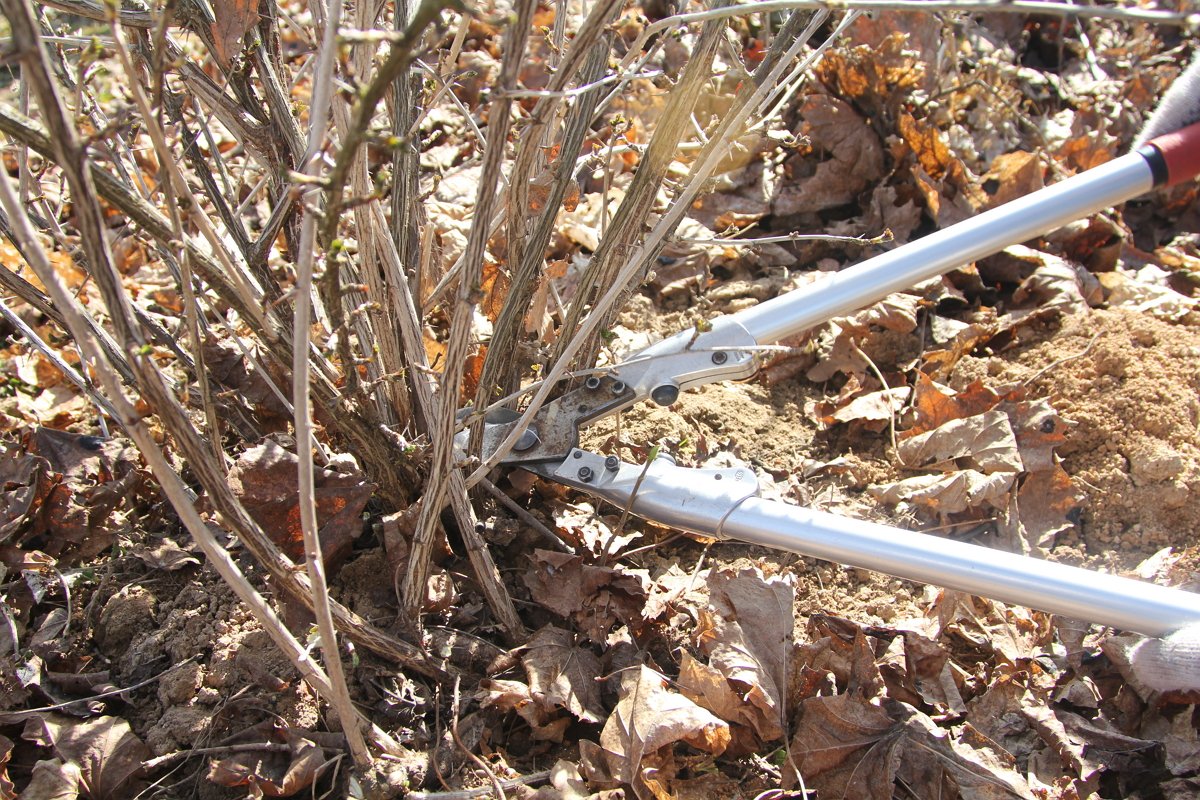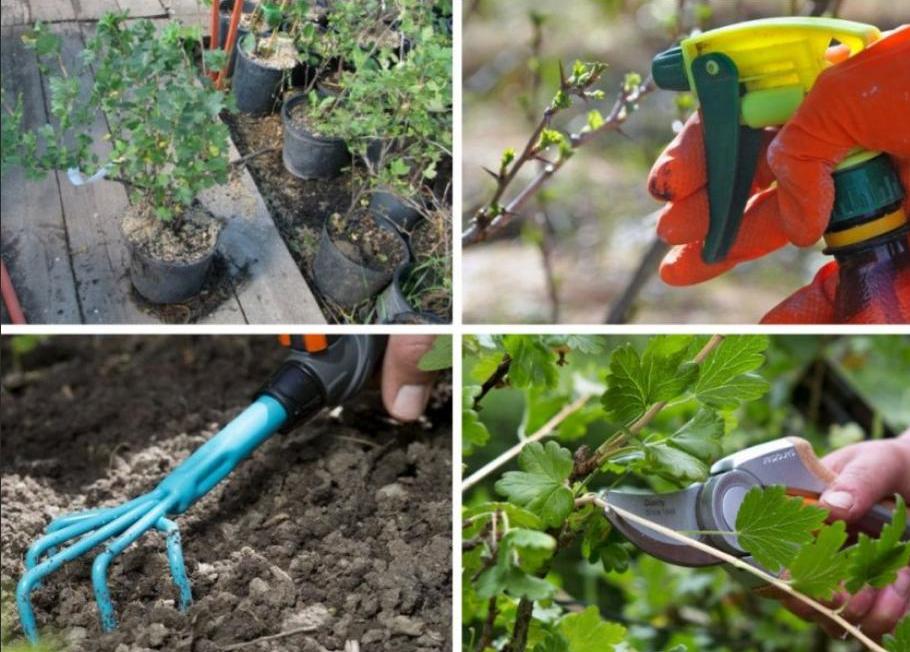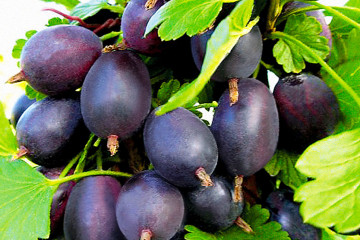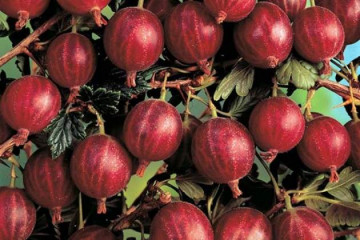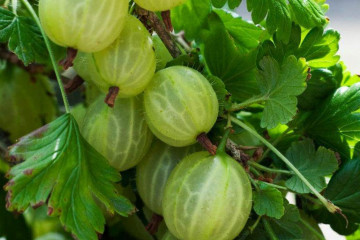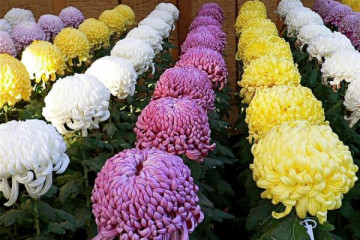Thornless gooseberries - characteristics of red and black varieties
Content:
Thornless gooseberry is a wonderful plant for growing in the garden. Thanks to the improved characteristics, it is safe to handle the bushes, and the size and quality of the crop is simply incredible. Growers appreciate the culture for its high resistance to disease and adverse weather conditions.
Breeding history of the species
The first gooseberry without thorns was bred selectively back in the 60s of the last century. However, the first version of the culture remained susceptible to disease and other negative factors.
When trying to improve such a "convenient" in the mid-70s, the work gave tremendous results. It turned out to make the culture hardy, increase the yield and transform the taste. From this period, breeders began to breed more and more new varieties of plants almost every year.
Thornless gooseberries, the varieties of which have become more advanced, are actively used in the gardens of ordinary amateur gardeners. A wide variety of choices allows you to choose the type that is ideal for the individual needs of the gardener.
Characteristics and descriptions of the best representatives of the species
Thornless gooseberry varieties are represented by a huge variety. The shrub has a lot of advantages in comparison with thorny ones - the branches are easy to cut, you can easily harvest the crop without the fear of pricking, it simplifies the harvesting of leaves in preparation for winter.
Chokeberry
A distinctive feature of these varieties is precisely the color of the berries. Usually, the color of the fruit is as close to black as possible, sometimes it has a red tint. The most popular black chokeberry varieties are:
- Chernomor. Resistant to frost and most diseases. The bush is not sloping, but high enough. Refers to mid-season varieties. The berries are not too large, but the yield from one unit can be about 15 kg. Taste assessment - 4.3 points.
- North Captain (Consul). Resistant to low temperatures. The bush is high (1.8 m) and sloping. Differs in rapid maturation. The fruits are small, but about 10 kg can be harvested from the bush. Taste rating - 4.2.
- Grushenka. The shape of the berries is non-standard. The plant easily tolerates frost, heat, drought. The fruits are large, and the yield can be 6 kg per bush. Taste score - 4.5 points.
Red-fruited
The thornless red gooseberry has the following varieties:
- Gingerbread man. Round fruits are red. The berries are delicious, so they are used for canning, juice and wine making. Ripening dates July-August. The variety is frost-resistant.
- Avenarius. The fruits are large, red in color. High yield, but not every year. Due to the rapid growth, the skin may crack. Honeycomb does not tolerate frost and is susceptible to certain diseases.
- Red Slavic. The berries are large and expressive. The variety does not suffer from fungal diseases and powdery mildew, copes well with frost and drought.
Green varieties
Green gooseberries are widespread due to their good resistance to negative factors. Completely green berries are practically not found, as they turn yellow during the ripening process.
Popular crop varieties:
- Spring. The color of the berries is emerald yellow. The fruits are large, so the branches can sink under their weight. The variety is resistant to fungal diseases and tolerates low temperatures well.
- Keg. The berries are large, light green in color. The taste is sour, but this is offset by barely noticeable nutmeg notes.
The sweetest
Varieties with sweet berries additionally contain many acids and vitamins that have a positive effect on human immunity. The sweetness of the berries in this gooseberry is not cloying, as it is usually balanced by a slight sourness.
Popular varieties:
- Russian yellow. The taste of the berries is so sweet that you can eat them even in an unripe form. The variety is very resistant to disease, drought and frost. The fruits are large, elliptical in shape with a barely noticeable strip along the berries.
- Honey. The taste is bright and sweet. The variety is afraid of frost, requires periodic pruning and monitoring the composition of the soil.
- Malachite. The pleasant aroma and taste make this variety very popular compared to the rest of the category.
The most productive
These varieties are usually pink in color. The high yield does not in any way impair the taste of the gooseberry. Among the record holders, the following varieties are distinguished:
- Amber. High yield is complemented by excellent resistance to all negative weather conditions. The taste is slightly sour.
- Altai license plate. The harvest from a bush can reach more than 18 kg. The variety is afraid of frost and early thaws. The size of the berries is medium.
- Uralsky. In addition to high yields, the variety is resistant to frost and drought. The taste of the berries is sweet and sour. The size of the bush is average.
General advantages and disadvantages of studless gooseberries
Like any breeding species, the plant has the best qualities, but it also has flaws. The thornless gooseberry has the following benefits:
- The bush is easy to handle, harvesting is not complicated due to the absence of thorns.
- Basically, all varieties are frost-resistant and immune to standard gooseberry diseases.
- The high yield is combined with good taste.
Negative sides of the plant:
- The gooseberry is not prickly along the branches, but the thorns are present on the trunk at the pre-root part.
- The shrub requires more careful pruning, since the aboveground part is usually quite large and spreading.
- The berries are not always large.
Drought resistance, frost resistance
Thornless gooseberries, the most popular varieties of which are resistant to low temperatures. Some of them also tolerate hot, dry weather well. If any problems have arisen due to unfavorable climatic conditions, with proper care, they are quickly resolved.
Productivity and fruiting
Selected types of crops give an excellent yield, which can be from 5 to 15 kg from one average bush. The berries are usually evenly spaced along the branches, and can be formed in clusters of 2-3 fruits.
The ripening of each species is determined individually, but usually ripe berries can be tasted in mid-June or early August.
Scope of the fruit
The selective gooseberry has a huge range of applications. Taste and aroma make the berries of the plant versatile for any type of processing. Gooseberry fruits are great combined with any berries and fruits.
Possible ways of eating, preparing food and preserving:
- cooking preserves and jams;
- making wine;
- fresh consumption;
- canning of compotes.
Disease and pest resistance
Select varieties of gooseberries are immune to many standard crop diseases and pests:
- powdery mildew;
- anthracnose;
- septoria;
- fungal diseases;
- spider mite;
- moth.
This makes the plant more popular among gardeners, since in most cases the crop is lost precisely due to such common diseases.
Gooseberry planting rules
In order for the plant to root normally and develop in the future, it is worth making a high-quality planting. There are several basic conditions that must be met when planting the presented crop.
Recommended timing
The best time to plant is late September or early October. Basically, they are guided by weather conditions. Particular attention should be paid to early frosts. If this option is possible, then it is better to plant the bushes in mid-September.
Choosing the right place
Choosing a place is a priority for planting gooseberries. It is necessary that the bush is located 50 cm from the fence or other buildings. The site must be well lit. The presence of drafts and shade can affect the development and maturation of berries.
Selection and preparation of planting material
In order for the plant to bear fruit well in the future and develop well, you need to choose a suitable planting material. A studless bush must meet the following requirements:
- The seedling must be intact, the root and its branches must be "alive".
- Using the pruning method, you need to leave no more than 5 branches on the bush.
- There should be no insects or mechanical damage on the buds and trunk.
- The branches should be of medium thickness.
Landing algorithm
- Dig a hole 60 cm deep, with sides 40 cm.
- Pour 10 liters of humus, mineral fertilizers and 50 g of wood ash into the pit.
- Stir the mixture until smooth.
- Lower the seedling into the hole, sprinkle with soil, tamp the earth around the trunk.
- Water thoroughly.
Gooseberry follow-up care
Thornless gooseberries require attention in terms of care. Even increased resistance to some negative factors will not save the culture from death if the bush is left unattended.
Basic plant care procedures:
- Periodic watering (once a week).
- Loosen the soil around the trunk after each watering.
- Perform formative pruning every year.
- Feed the crop based on the age of the bush.
Diseases and pests, methods of control and prevention
Thornless gooseberries are quite resistant to diseases and pests, but nevertheless, as a preventive measure, it is worth spraying with special preparations. It is also worthwhile to properly care for and water the culture in a timely manner.
Thornless gooseberries are a popular crop among gardeners. The plant has a lot of positive characteristics that allow you to bring a huge harvest with extremely positive taste properties.
